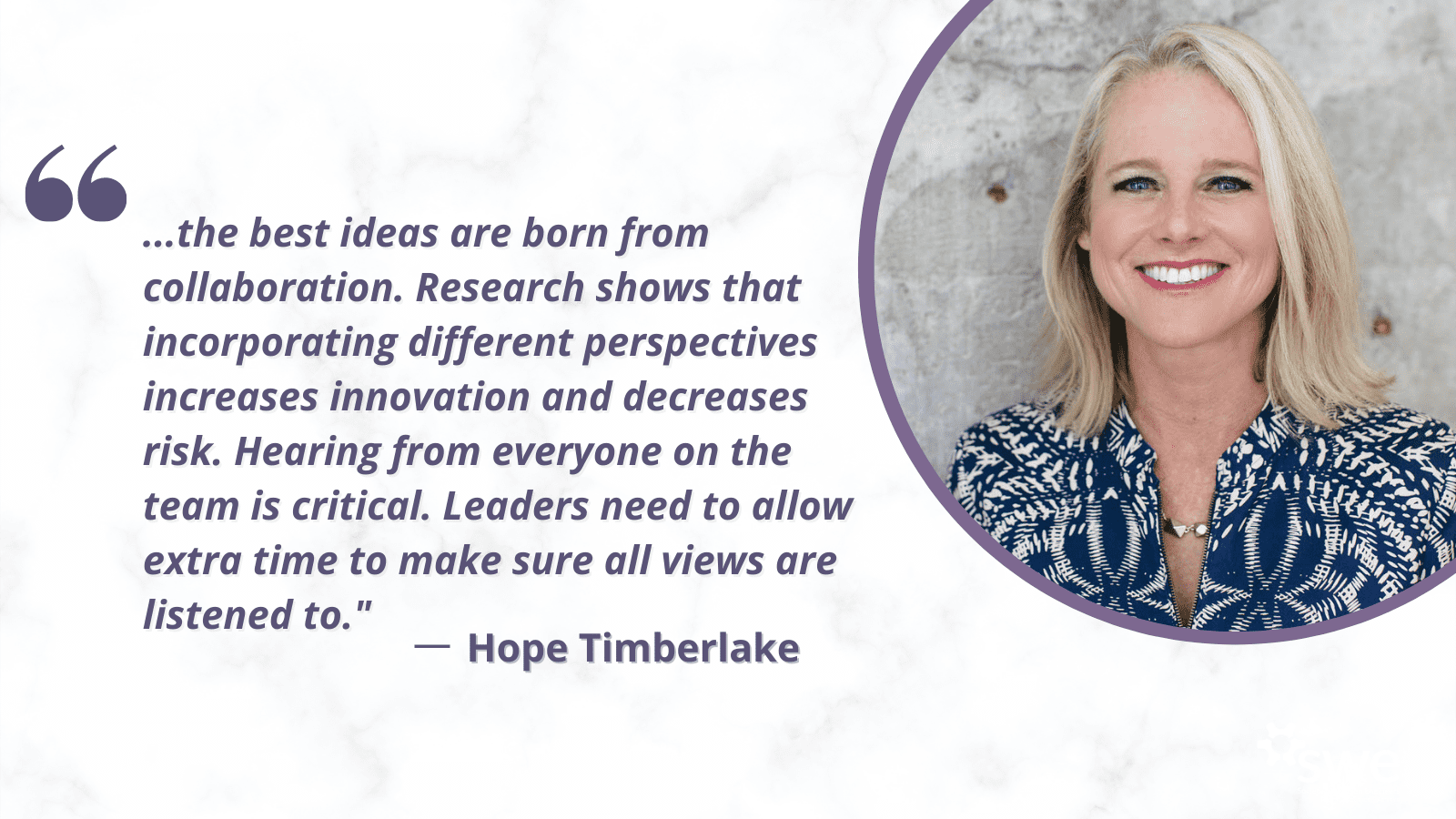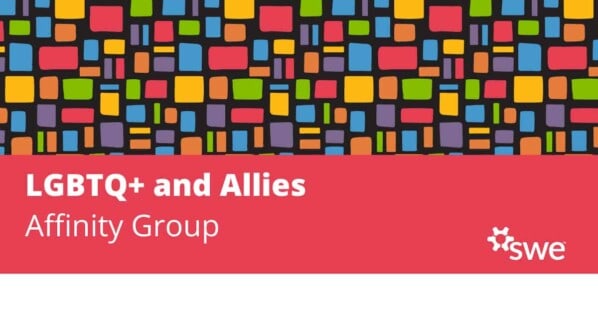 Hope Timberlake is a speaker, trainer and author who focuses on persuasive communication and meeting presence. She is passionate about elevating the voices of women and those underrepresented in leadership. You can view her on-demand presentation, Speak Up! How to Show Up with Presence and Communicate Your Ideas Effectively in English and dubbed/subtitled in Spanish on SWE’s Advance Learning Center.
Hope Timberlake is a speaker, trainer and author who focuses on persuasive communication and meeting presence. She is passionate about elevating the voices of women and those underrepresented in leadership. You can view her on-demand presentation, Speak Up! How to Show Up with Presence and Communicate Your Ideas Effectively in English and dubbed/subtitled in Spanish on SWE’s Advance Learning Center.
What are some of the challenges people face when presenting or speaking up, specifically during a videoconference meeting or even during a hybrid meeting, and what are some tips to mitigate those challenges?
There is no doubt about it; virtual work is here to stay. Here are strategies for making video communication as effective as possible:
Bring the energy. Infuse your communication with passion to engage your listeners. Aim to double your energy by emphasizing keywords, using large, intentional gestures, and varying your facial expressions.
Ask open-ended questions. It’s hard to “read the room” when we’re on video. An excellent way to track your listeners’ interest is to ask questions but not the standard (and highly ineffective), “Any questions?” Instead, ask a specific question along the lines of, “How will this process work for your team?” or “What challenges will we have with implementation?”
Hide your self-view. This bears repeating: Hide. Your. Own. Face. Working in front of “a mirror” is distracting. When you hide your image, you’re better able to focus on your listeners.
If you’re a team lead, manager, or similar, how can you positively support and thoughtfully encourage your team members to speak up if they are used to staying quiet or speaking as little as possible?
Leaders can be instrumental in setting the tone and creating an environment where people feel comfortable contributing, yet it requires intention and patience.
The first step is to remember that the best ideas are born from collaboration. Research shows that incorporating different perspectives increases innovation and decreases risk. Hearing from everyone on the team is critical. Leaders need to allow extra time to make sure all views are listened to.
Next, let the team know you want to hear from each participant and highlight why this is important. Ideally, you communicate this in the meeting invite and at the start of each meeting. Emphasize (and believe) that no contribution is a bad idea. It can be helpful for people to share “bad ideas” to confirm that every angle has been examined.
Sometimes, it can feel awkward to ask a question near the end of a meeting or at the end of a conference presentation since it will add time to the event and others may be ready to leave. Any advice about speaking up when it’s almost the end of the meeting?
When this situation occurs, I encourage you to reframe your thinking. Rather than worry about others’ desire to leave, think about the benefit your contribution may have on the room. Your question may be the one that other people have but are too afraid to ask. And the answer the speaker provides could greatly benefit you and the other attendees.
Sometimes, it’s necessary to speak up when interacting with a difficult customer or angry public member. Any advice on speaking up effectively if the mood is tense and the other person isn’t your colleague or co-worker?
Unfortunately, difficult people are a part of life, and we need to navigate this carefully.
The first step is to remain calm. Breathe, relax your body, and recognize that the angry or challenging person is likely not mad at you but at the situation or something else happening in their life. Remaining calm allows you to appear confident and respond purposefully.
Next, probe to learn more. Even if you think you fully understand the situation, it helps to ask open-ended questions to allow the person to explain (or vent) and make sure you truly understand. Asking, “What is your desired outcome?” doesn’t obligate you to meet their needs, but it does clarify what’s important to them. Many people calm down once they’ve been heard.
What exercises can one do before giving a presentation that will quickly boost their confidence?
Here are three strategies for boosting your confidence before a presentation:
Visualize success. Paint a positive picture detailing how the audience will respond to your presentation. Add as much “color” as possible! Although this process can be viewed as “fantasy,” research shows that detailed, positive visualizations translate into success.
Power Pose! Social psychologist Amy Cuddy explains how standing in a powerful pose for two minutes helps you feel more capable. This pose can consist of your legs firmly planted in the ground and your arms above your head in a victory “V” or your hands on your hips like Wonder Woman. See Amy Cuddy’s popular TEDTalk, Your body language may shape who you are for more details.
Get curious. Think about how you can impact or benefit one person in your audience. What do they need to hear or learn? When you focus on the audience, you’re better able to meet the room’s needs and less likely to get stuck in a self-critical cycle in your head.
You can view her on-demand presentation, Speak Up! How to Show Up with Presence and Communicate Your Ideas Effectively in English and dubbed/subtitled in Spanish on SWE’s Advance Learning Center.
This course offers .10 CEUs/1.0 PDH.

SWE is accredited by the International Association for Continuing Education and Training (IACET) and is accredited to issue the IACET CEU. In order to earn CEUs for this course, you must complete the full course and pass the knowledge check assessment with an 80%.
The Society of Women Engineers (SWE) has been approved as an Authorized Provider by the International Association for Continuing Education and Training (IACET), 1760 Old Meadow Road, Suite 500, McLean, VA 22102; (703) 506-3275. In obtaining this approval, the SWE has demonstrated that it complies with the ANSI/IACET 1-2018 Standard which is recognized internationally as a standard of good practice. As a result of their Authorized Provider membership status, SWE is accredited by the International Association for Continuing Education and Training (IACET) and is accredited to issue the IACET CEU. In order to earn CEUs for each course, you must complete the full course and pass the knowledge check assessment with an 80%.
Author
-

SWE Blog provides up-to-date information and news about the Society and how our members are making a difference every day. You’ll find stories about SWE members, engineering, technology, and other STEM-related topics.






